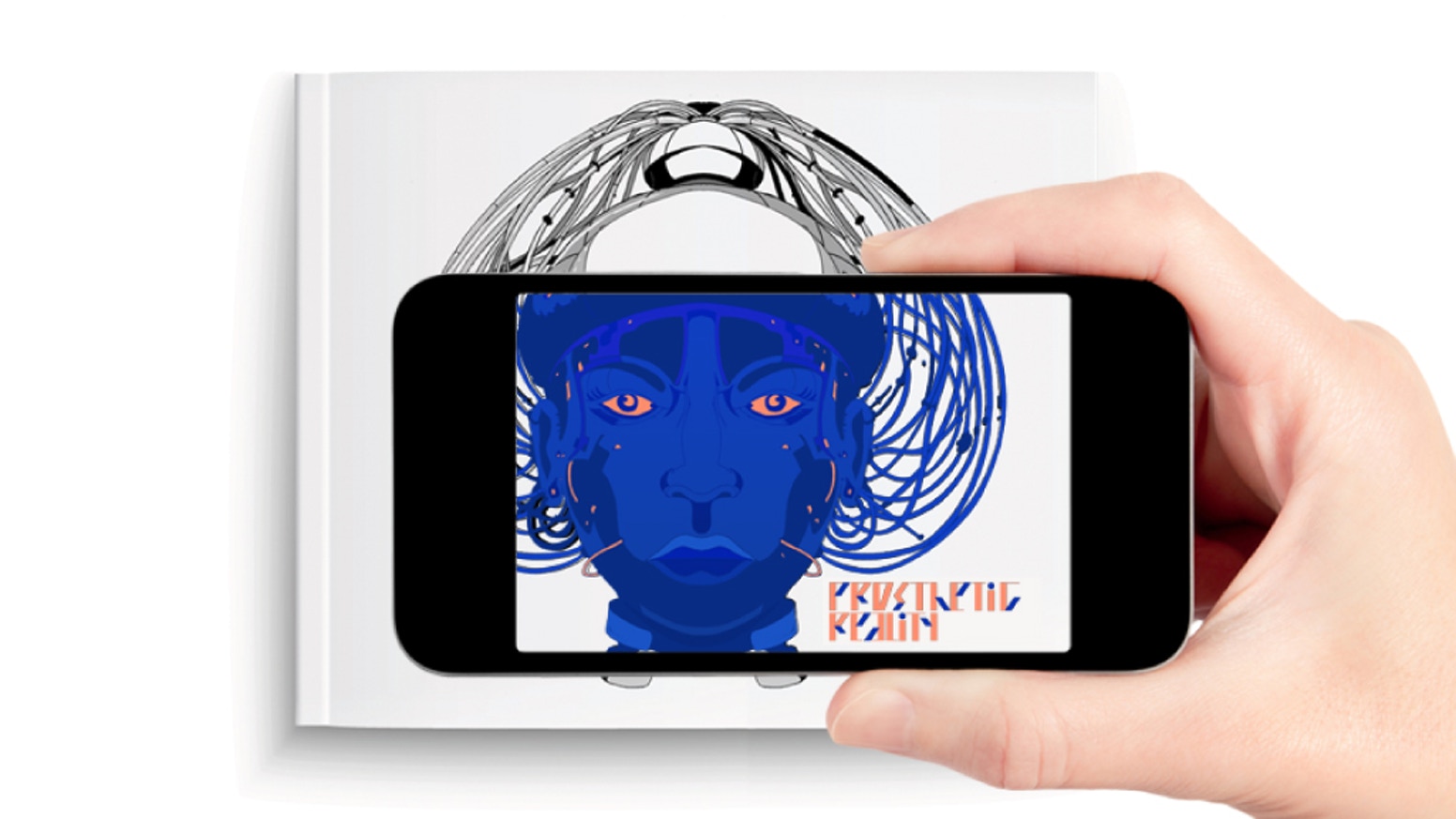You wouldn’t think much of it as you swipe your way through Spotify, but your ability to discover new artists recommended by your own music preferences on the app is nothing short of miraculous. In fact, Artificial intelligence (AI) technology and machine learning are increasingly being used to analyze human behavior so that technology can predict what users want and deliver it to them with greater ease. In a perfect utopian future, the physical world is enriched by the digital and virtual world, enhancing human experiences with information, visuals, and utilities. Alongside Artificial Intelligence, another breakthrough only dreamed of a few decades ago (and now more accessible and widely-used than ever) is Augmented reality. AR is a copied view of a physical, real-world environment whose elements are supplemented (ie. “augmented”) by computer-generated sensory input. AR provides and disseminates information and experiences that couldn’t have been easily accessed just a few years ago. The similar and more widely used “virtual reality” replaces the real world with a simulated one whereas augmented reality takes the real world and adds to it with—in the case of architecture—a 3D model of a design.
In this vein, AI and AR technologies have already become integral tools in creative culture and its industries. Just as we tend to forget that we each have an artificial intelligence assistant at our beck and call right in our pockets, AI and AR technologies are in fact being used in brilliant ways that we may not even be conscious of.
Architecture & Design
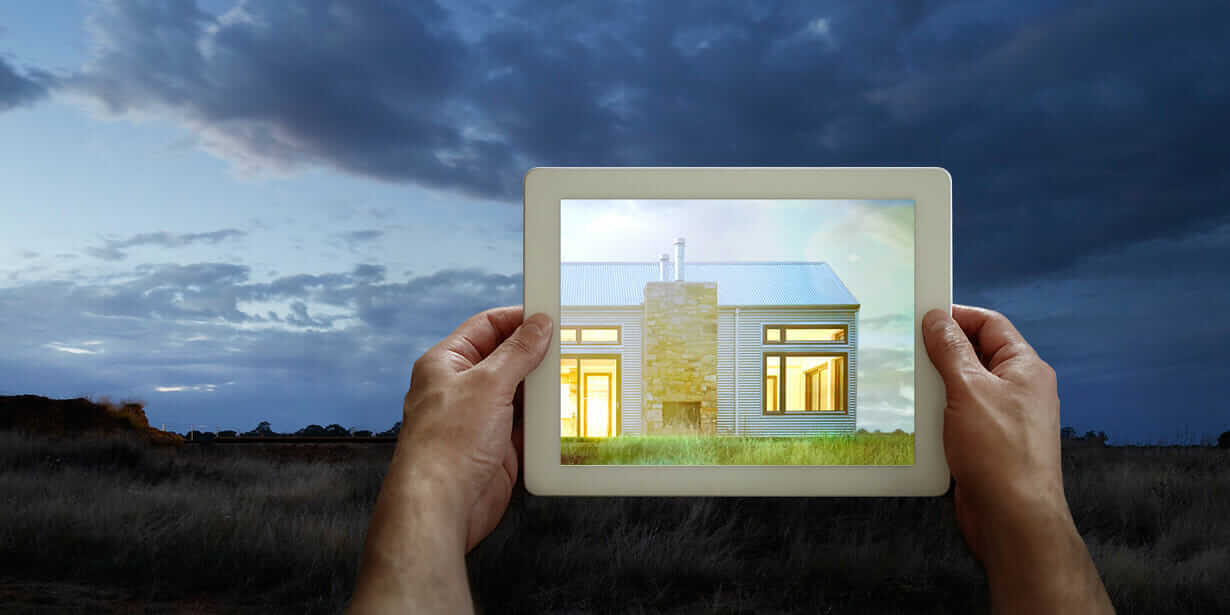
Augmented Reality is our world, amplified, manipulated, or whichever phrasing you fancy. Tools like computer vision and object recognition allow users of AR programs to engage with an interactive and digitally-manipulatable world. In definition it seems simple, but in practice it allows for creation within the context of actual surroundings, and the limitless understandings that come from it. In architecture, AR technology is often used in planning and design. Often a 3D model of a proposed design is placed an existing space, allowing a real world image capture to interact with components created from computer graphics. Employing mobile devices like tablets and iphones, contractors and designers like Seattle’s BNBuilders began using AR to demonstrate proposed designs in the context of existing conditions and structures.

AR-paired modeling softwares such as Autodesk Revit hugely assist in space planning and design visualization. AR was once confined mostly to architecture firms and large engineering corporations with vast resources and time, but now the technology but the technology has now been democratized and is available on a per-project basis. Small firms and even sole proprietors can take advantage of it now and visualize their projects in new ways, and by a wider breadth of specialists like landscape architects, structural engineers, mechanical, electrical, and plumbing engineers, designers and contractors. Other apps have programmed features where a camera recognizes a 2D design, and the screen then overlays a virtual model of the completed project to scale of the design, viewable in full, 360-degree view. Apart from visualization, AR’s many uses in architecture include resolving constructibility issues and collaborating on changes. Architects can walk into their own construction before it is ever built. These advantages extend to furniture manufacturers as well. AR offers opportunities now to go beyond simply imagining what a couch would look like in a living room from a showroom floor. Now, companies like Ikea and Opendesk are making use of their apps and AR development resources from phone manufacturers to virtually place furniture into rooms, so customers can stay at home and visualize a room with potential furniture in it, without the aid of imagination.

In space visualization, Casa Batlló––Antoni Gaudí’s masterpiece architectural home––utilized AR in a similarly ingenious venture to visually convey how the house originally appeared, with original furnishings rendered virtually, and with magical visual effects that emphasize the building’s ocean concept (cue the sea turtles gliding through the air). The AR experience, which is also coupled with an audio tour in step with the augmented effects, serves as a wonderful educational tool for those who visit.
Fashion & Retail
Of course the fashion industry, one of the largest and most profitable in the world, is unsurprisingly investing in AI and AR technologies heavily as well, from the way that fashion companies manufacture their products to the way they are marketed and sold; and it is transforming the entire industry. With the pervasive presence of phones in the hands of their target market, it makes sense to use phones to sweeten retail deals or to dramatically reduce the amount of time it takes to make a purchase. Gucci has utilized tickets and scannable codes on receipts to give customers access to virtual, augmented reality art for viewing in-store anytime. Other retailers place codes on mannequins, allowing prospective customers to simply scan it to immediately purchase the look.
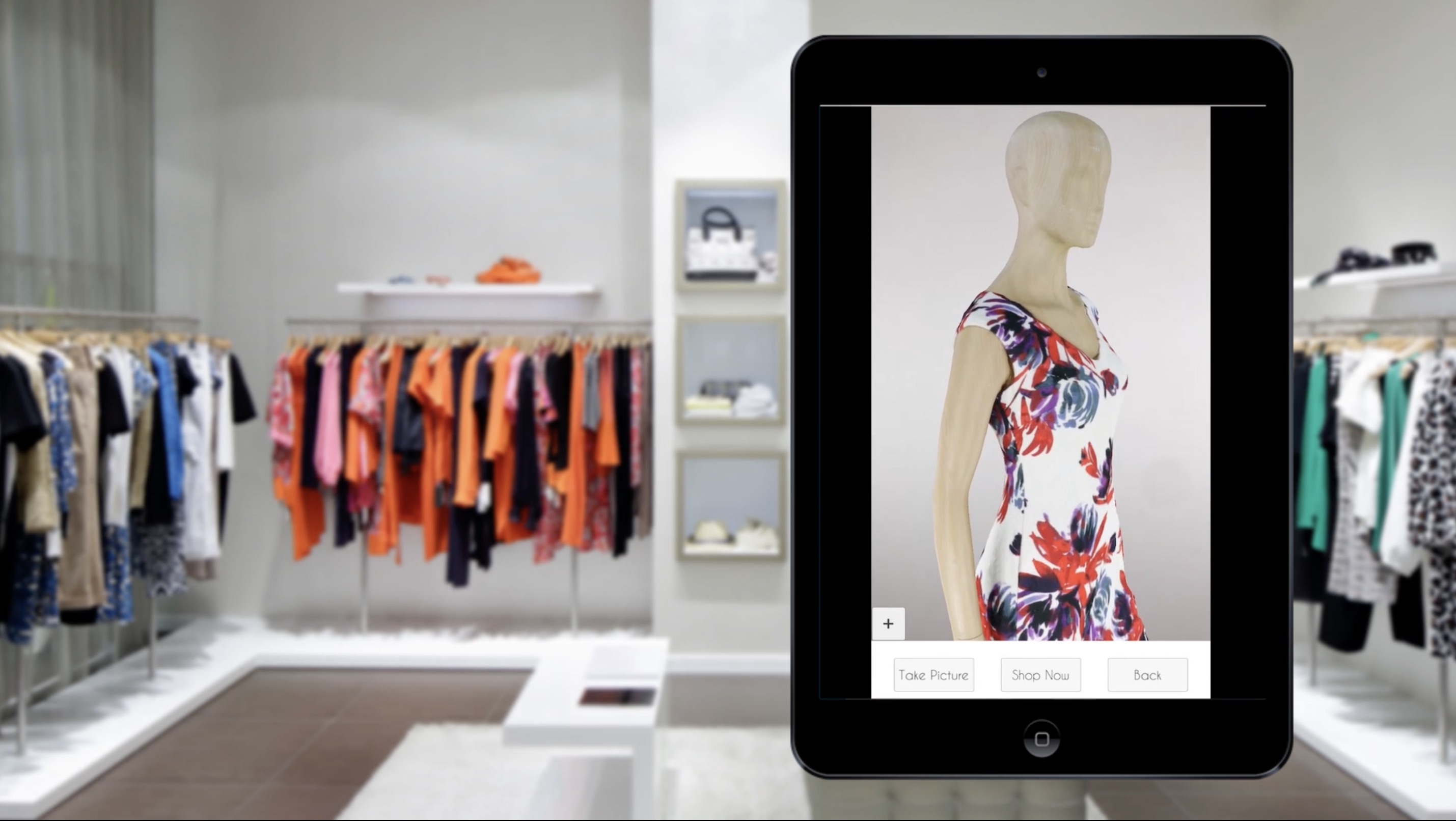
Ever wanted to consult a personal stylist without leaving the home to meet a pesky appointment? One company at the forefront of the intersection of fashion and AI is Stitch Fix, an online personal styling service. Launched in 2011, Stitch Fix has users complete a style profile and are assigned a personal stylist. Stylists will send a box — also referred to as a “fix” — with a curated selection of clothes, accessories, and shoes that fit within one’s taste and budget. All of this information is determined by AI and its algorithms. Using clients’ feedback per fix, both the stylist and Stitch Fix’s algorithms gain a better sense of their styles.
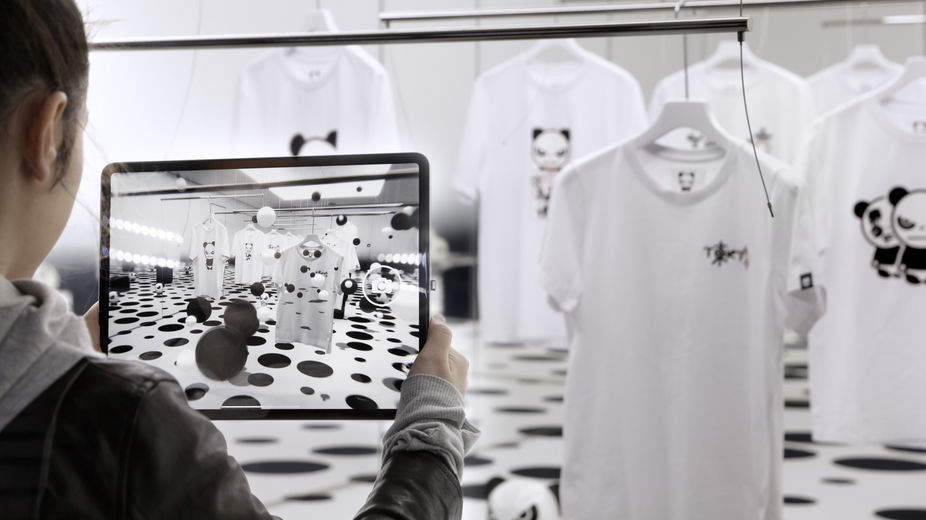
Tokyo-based streetwear store Hipanda made headlines for its AR retail experience, animating areas of the store and bringing to life its mascot.
Furthermore, completely virtual or partially-virtual dressing rooms are spreading, allowing users to either simulate their height and weight to predict the fit of clothing, or utilizing mirrors that will digitally track clothing onto customers in real time, making it unnecessary to even leave the dressing room to explore alternative pieces of clothing. Even while at home, customers may never have to guess at what shoe size they are in each brand, if Nike’s new app feature becomes commonplace. The Nike Fit app can now scan a user’s foot to accurately inform them of their shoe size. Perhaps one day, shoe sizers that resemble medieval medical equipment will be a thing of the past.
AR advancements in clothing selection and try-on has huge implications for the environment and convenience of customers. If customers can digitally try on clothing in such a way that it is comparable to reality, it would mean a lot less emissions from ordering products, only to return them when the product received is not as expected, to say nothing of the implicit benefits for the seller’s bottom line in regards to shipping.

Unfortunately, having a practically limitless number of options of clothing to try on, unburdened by physical stock, is only likely to be a greater disadvantage for the indecisive among the population. For that, AI can help. Amazon Echo now has a feature that can digitally catalogue outfit photos from a users phone, and pick the best between two when prompted, based on fit and current trends. Is AI getting too personal? Maybe, but for those who find themselves paralyzed by indecision may find the trade-off worthwhile.

Amazon Echo Look fashion camera.
If nothing else, AR makes it easy for brands to provide stylish and unique methods for customers to advertise for them, creating transformative social media filters and lenses for posting and sharing photos or video. Embracing these tech developments first are what put fashion brands ahead of the curve, and ensures their success in a present where ignoring social media is simply not an option.
Fashion manufacturers are also innovating the use of AI to help improve efficiency of manufacturing processes and augment human textile employees. AI systems are being used to spot defects in fabric and ensure that the colors of the finished textile match with the originally designed colors. AI technologies such as computer vision technologies are allowing quality assurance processes to be more streamlined. We are now seeing that AI technologies can add value in every part of the fashion industry, from the design process and manufacturing processes to sales and marketing of finished goods. The future of fashion is inevitably intelligent.
Art & Museums

Not an art museum patron exists that hasn’t sighed with desire for scenic romantic landscape paintings, or lively impressionist cafe scenes. “I wish I could step into the painting,” many—perhaps even yourself—have once mused. Museums have begun to take notice, and with AR, experiencing whole paintings, and the learning that arises from it, has suddenly become possible. At the Mauritshuis Museum in the Netherlands, visitors can use their smartphones to step into one of Rembrandt van Rijn’s most famous paintings, “The Anatomy Lesson of Dr. Nicolaes Tulp” in an augmented reality program devised by CapitolaVR, and peer over Rembrandt’s shoulder. The 3D rendering came to life through a real-life construction of the painting by CapitolaVR in which they selected “lookalikes” to pose as each of the characters in the scene, using makeup and 17th-century costumes to make them appear as similar to the painted figures as possible. They then used a 3D scanner made up of 600 reflex cameras to scan each actor and the setting – which was reconstructed from the original room at the Waag in Amsterdam – before combining these scans and fine-tuning the textural details via 3D modeling software. “The AR app offers people a different way of exploring art both visually and on an educational level,” CapitolaVR’s head of digital David Robustelli stated in an interview. Several “hotspots” are also dispersed throughout the AR rendering, each with information on the history of the painting pointing out specific hard-to-see features. The implementation of AR in fine art has the unparalleled ability to activate works of art, make them explorative and immersive, carrying fine art into the technological future.
“As you ‘physically’ step into the painting you are fully immersed and learn its history while exploring the way it was created by one of the world’s most famous painters.” – David Robustelli

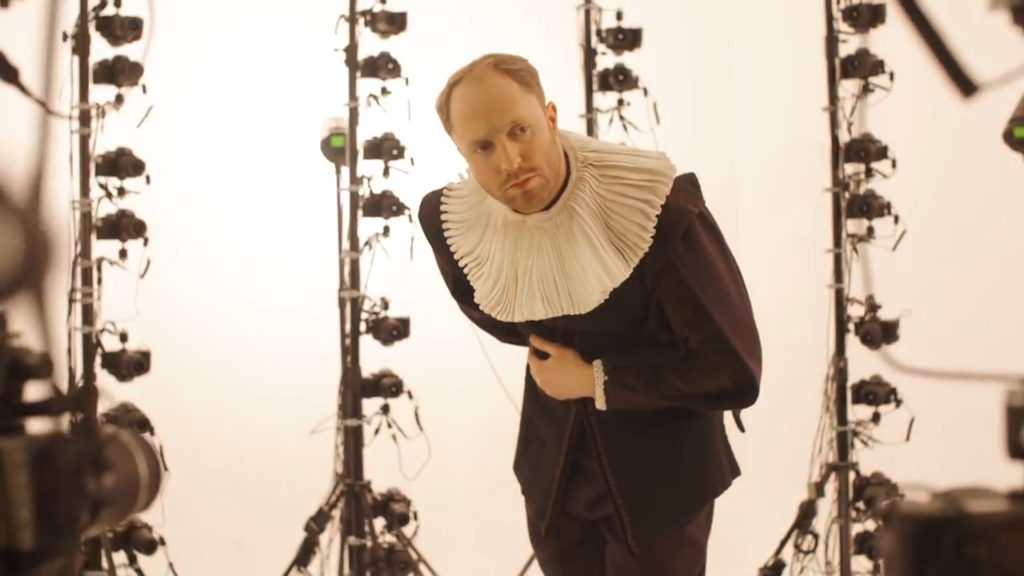
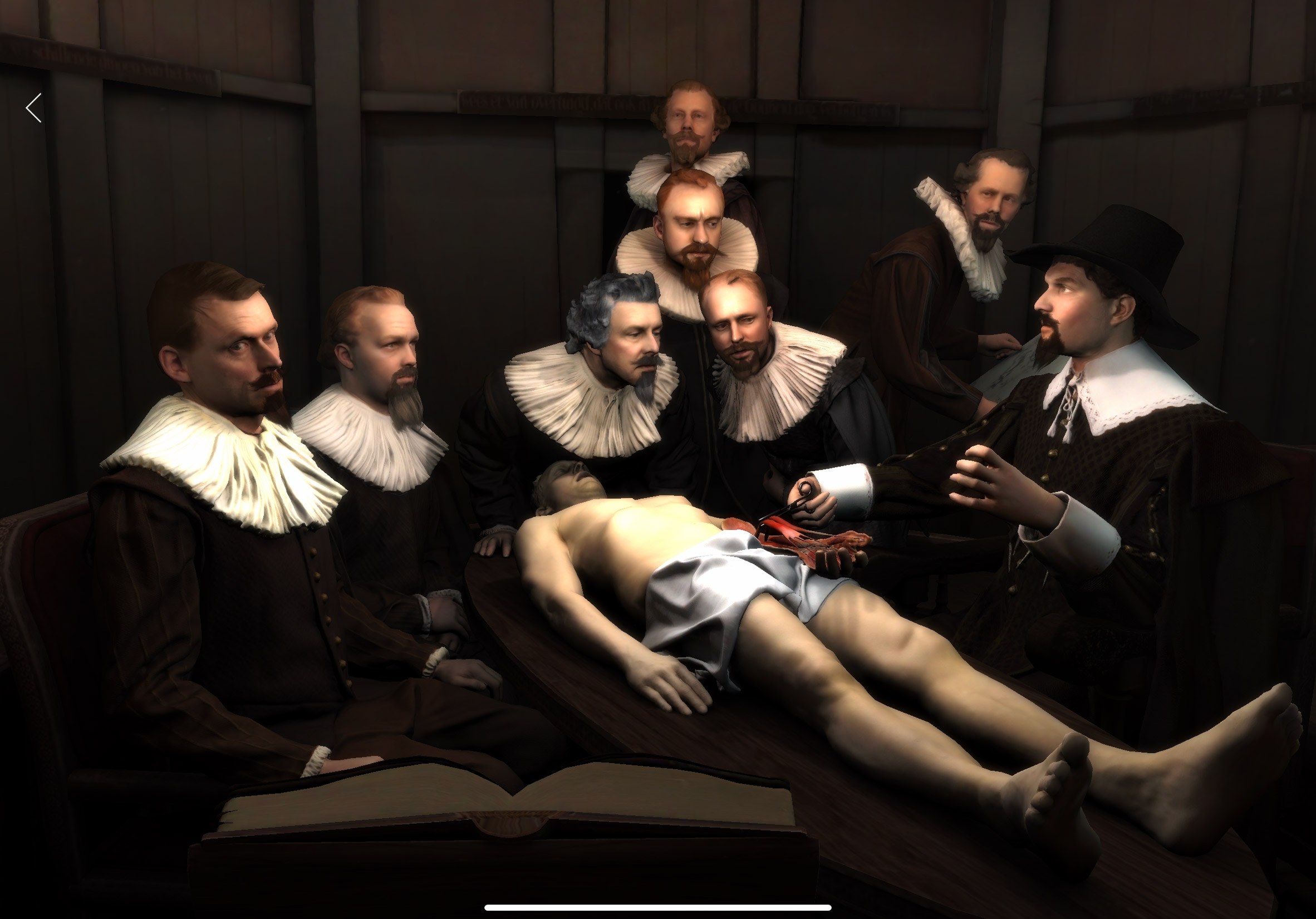
Virtual Reality (VR) presents many exciting opportunities for science and history museums as well, as completely virtual experiences rather than piggy-backing off of the real world. Through VR, and specifically the HTC Vive headset and controllers, the American Museum of Natural History is offering unique experiences with the most infamous dinosaur in its upcoming exhibition “T. Rex – the Ultimate Predator.” The Tyrannosaurus Rex experiences will feature multiplayer activities, where museum patrons can collectively reconstruct the apex predator’s skeleton, witness its true feathered form, and even immersively observe its simulated behavior first hand and even interact with the killer prehistoric beast and its offspring.
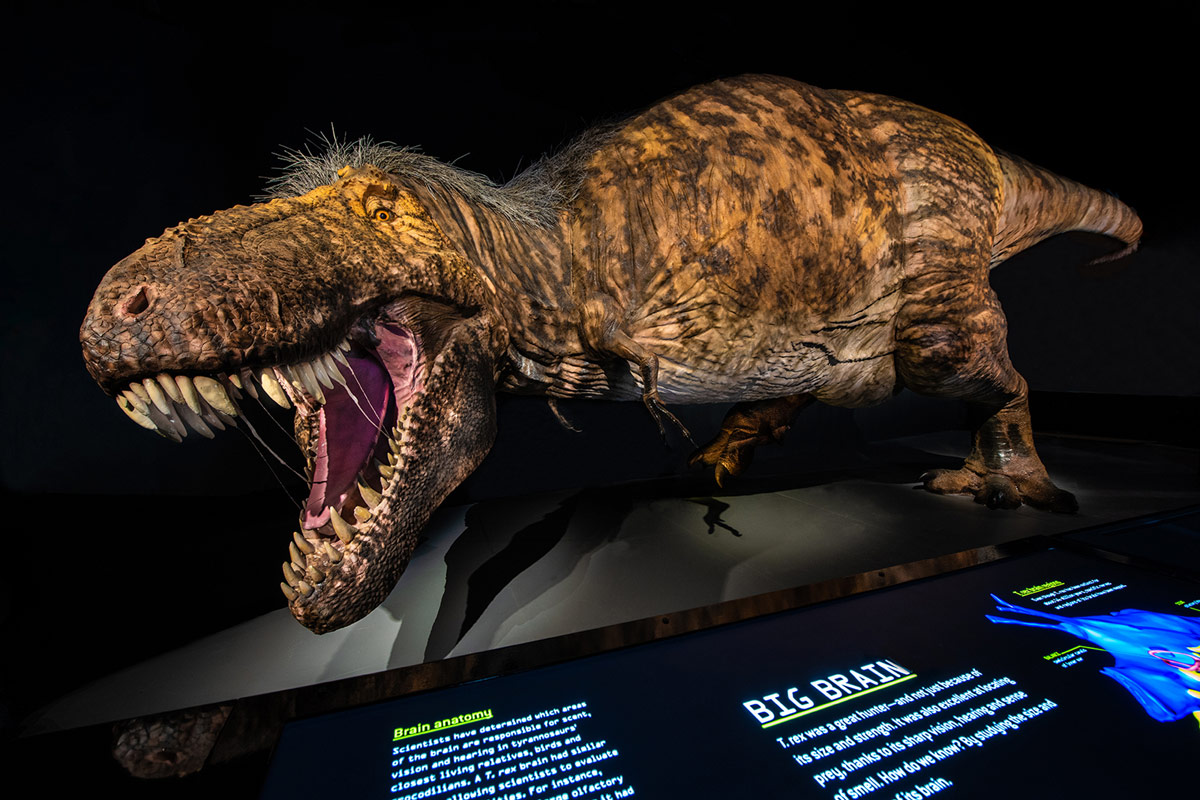
The Future of AI & AR
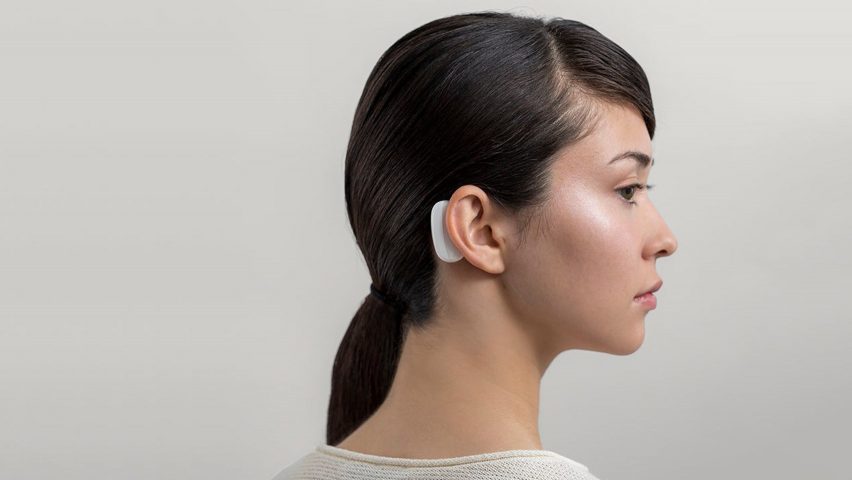
AI and AR technologies function to bring humans and larger cloud intelligence closer together. But just what are the limits, then, of AI and AR? Instead of simply benefitting, will human beings one day fuse with technology and become one? Tesla founder Elon Musk has been pushing these bounds by launching a tech startup called “Neuralink” to build implants that connect human brains with computer interfaces via artificial intelligence. This technology would have discrete electrode threads implanted into a human brain via a neurosurgical robot. It would potentially create the first brain-machine interface (BMI) system, by linking the human brain to an external device. The goal of Neuralink is for its use in understanding and training various neural-spinal disorders. In the near future, for instance, paralyzed human beings could use Neuralink to control their phones and TVs. Musk envisions that this could lead to “superhuman intelligence,” and is expecting to begin first trials by the end of 2020. Be still our beating, frantic hearts. For every facet of our lives affected by AI and AR: just try to keep up.
